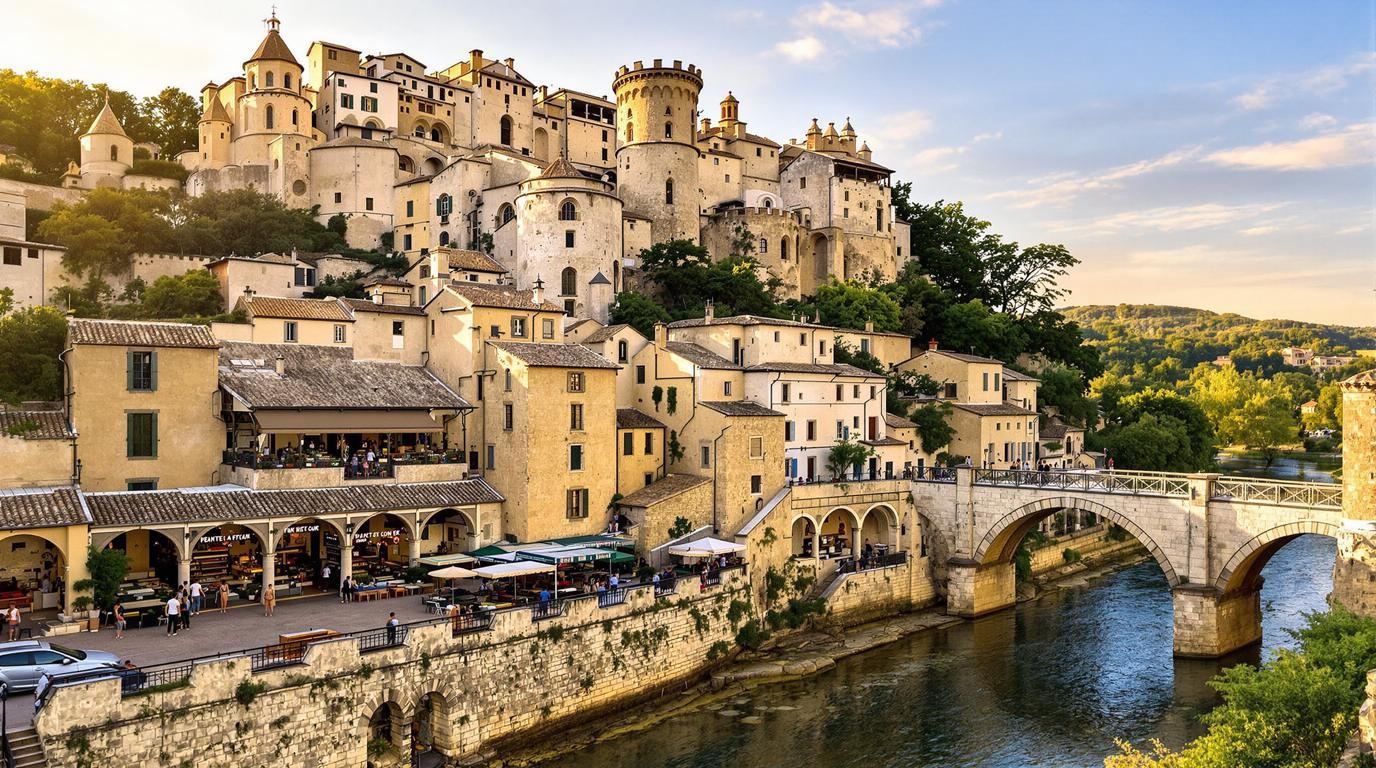Travelers searching for Europe’s most authentic medieval villages often overlook a true historical gem. Lagrasse, tucked in France’s southern Occitanie region, offers something increasingly rare: a genuine step back in time that hasn’t been overrun by tourism. This remarkably preserved village, classified as one of “Les Plus Beaux Villages de France” (Most Beautiful Villages of France), captivates visitors with its 13th-century architecture, artisanal culture, and riverside charm.
A village shaped by 1,200 years of monastic influence
Lagrasse’s story begins with Charlemagne, who granted permission to build the Abbey of Saint-Marie in 783 AD. This Benedictine monastery became one of the most powerful in southern France, shaping the village’s destiny for centuries. Today, visitors can explore both the public and private sections of this magnificent structure.
“The abbey represents the living heart of our community,” explains Marie Dubois, local historian. “Even after 1,200 years, its influence permeates every corner of village life.”
Medieval architecture frozen in time
What makes Lagrasse exceptional is how thoroughly it has preserved its medieval character. The narrow cobblestone streets, gothic Saint-Michel Church (dating to 1340), and remarkable covered market hall supported by ten stone pillars from 1353 create an atmosphere that transports visitors centuries back in time.
Unlike other medieval French towns, Lagrasse maintains an authentic working village feel rather than a museum-like atmosphere. The ancient Pont Vieux (Old Bridge) from 1303 still serves as a vital connection across the River Orbieu, offering postcard-worthy views of the village.
An unexpected artisanal renaissance
Perhaps most surprising about Lagrasse is its thriving artisan community. The village has become a magnet for craftspeople drawn by affordable historic buildings and excellent natural light. Visitors can watch potters, leather workers, soap makers, and artists practicing traditional crafts in studios throughout the village.
“We came for the history but stayed for the creative energy,” says Jean Leroux, a leather artisan who relocated from Paris five years ago. “There’s something about Lagrasse that nurtures creativity in a way modern cities simply cannot.”
Riverside delights most travelers miss
While many visit French mountain villages for natural beauty, Lagrasse offers an accessible alternative. The River Orbieu creates a natural swimming area beneath the medieval bridge, where locals and visitors alike cool off during summer months. These riverside beaches provide a perfect contrast to historical explorations.
Gastronomic discoveries beyond the ordinary
Lagrasse sits within the renowned Corbières wine region, with several excellent vineyards within minutes of the village. The Saturday market beneath the medieval market hall showcases local produce, cheeses, and artisanal products. Restaurants like Le Temps Des Courges and La Cocotte Felee serve remarkable regional cuisine that rivals more famous French culinary destinations.
Perfect base for Cathar Country exploration
From Lagrasse, travelers can easily explore the fascinating Cathar castles and hidden villages that dot this historically significant region. Like less-visited Greek islands, this area rewards travelers willing to venture beyond standard itineraries.
Accommodations range from charming village guesthouses like La Fargo to the more upscale Hostellerie des Corbieres. Most are family-operated with the personal touch missing from corporate hotels.
When to visit for the optimal experience
To experience Lagrasse without crowds, visit during shoulder seasons (April-May or September-October) when weather remains pleasant but tourist numbers diminish significantly. Winter offers a contemplative atmosphere with occasional festive markets around holidays.
Lagrasse demonstrates that authentic medieval experiences still exist in France for travelers willing to venture slightly off the beaten path. Unlike heritage sites reinventing themselves through modern art, Lagrasse preserves its cultural legacy while remaining a living, breathing community. Here, history doesn’t simply survive—it thrives in everyday village life.
